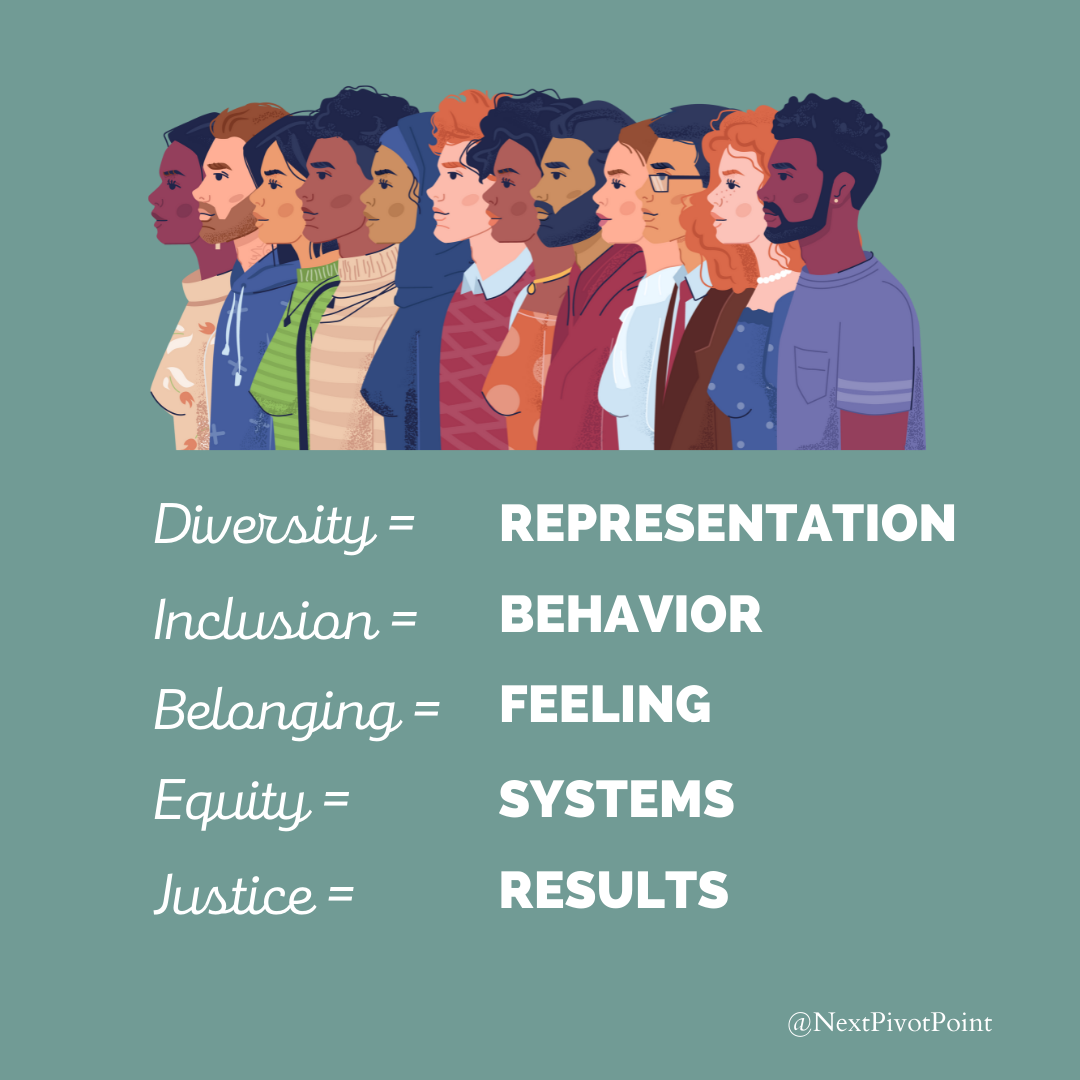Not sure where to start the diversity and inclusion conversation? These five questions help guide successful diversity and inclusion training.
Diversity and inclusion initiatives and training requires bravery and courage, and you do not have to do it alone. At Next Pivot Point, we believe we are stronger together, when we all come together as allies. We need people in the majority group (white, cisgender, male, straight, able-bodied) now more than ever engaged in the diversity and inclusion conversation and in diversity training.
Those that are generally considered diverse talent do not identify with the majority group by one or more dimension (non-white, LGBTQ+, female, disability). Marginalized groups cannot solve the equality problem alone. A small percentage of the population will only solve a small percentage of the problem.
Therein lies a chance to be an ally. Allies are people that advocate for people different than themselves. Allies talk bravely and candidly about diversity and inclusion.
The five DEI discussion questions to ask
If you strive to be an ally for others, consider asking these five questions at your organization:
- Why does our organization care about diversity and inclusion?
- What would our organization look like if it were more diverse and inclusive?
- What would we gain by being more diverse and inclusive?
- What is holding us back from maximizing diverse groups of people?
- What is one thing we can do to positively impact diversity and inclusion?
How to use these thought-provoking questions about diversity and inclusion
These questions can be used at your next team meeting, diversity training, leadership team discussion, or at lunch with coworkers. They open the door to a bigger dialogue. They work because they address the cultural transformation needed to be more diverse and inclusive.
Get the Five Questions Discussion Guide in Your Inbox
With any cultural transformation, that means change, and humans naturally resist change. Change is scary. Some even deny the problem exists altogether. They may say, “it’s a lot better than it used to be (as if continued inequality is okay) or “we cannot find diverse talent” (as if recruiting the same way will yield wildly different results).
There is no organization that has this figured out. No organization has maximized their diversity iniatives or training. Most want to better mirror their customer base, better attract a diverse profile of talent, and retain more diversity. To achieve this cultural shift and provoke real change, leaders must be willing to tackle the tough stuff.
Allyship is a journey. Along the diversity and inclusion journey, organizations must address key areas to sustain the positive cultural transformation:
- WHY: People need to know that the organization is authentic about diversity and inclusion. Here is how to craft a strong diversity and inclusion strategy.
- VISUALIZATION: People need to see it to believe it can be true. Here is a guide to positive affirmations that work.
- WIIFM or the “Business Case for Diversity and Inclusion”: People need to see the benefits to change. Here is a guide on why DEI still needs to remain a priority in your organization.
- PERSONALIZATION: People need to personally identify with the cause and weigh in to buy in. Here is a guide that shares the distinction between individual actions and systemic change.
Look back at the questions provided. They hit on these key areas needed to sustain the long-term shift that this change requires. They identify the why, evoke visualization, speak to the WIIFM (what’s in it for me), and personalize it to one simple action item.
Still not sure where to start the diversity and inclusion conversation? At Next Pivot Point we have lots of resources to help you facilitate successful diversity and inclusion programs. Schedule some time with our team today to discuss where to start or how to do better. You can also check out:
- Our available workshop topics for developing inclusive leaders.
- Our Train the Trainer programs for scalability within your organization
- Our Right-Sized DEI micro-content packages for consistent small-drip content throughout the year.

